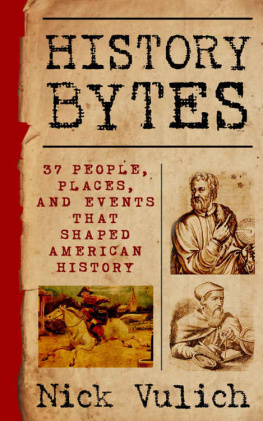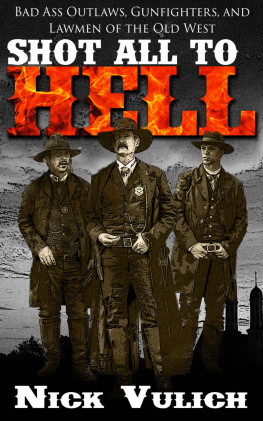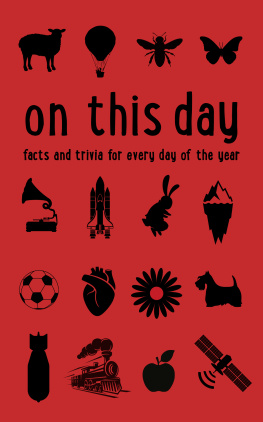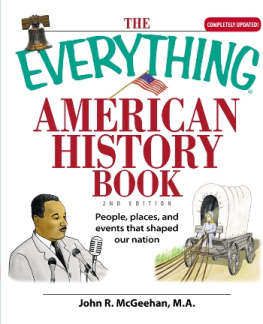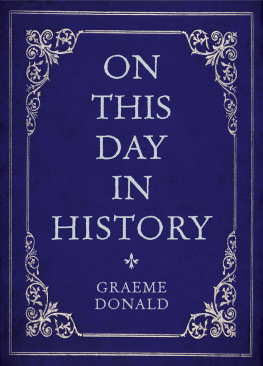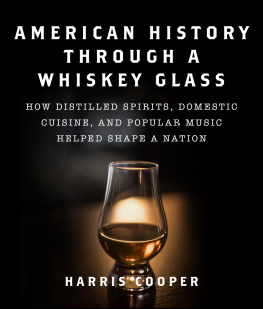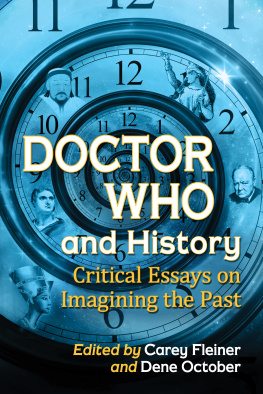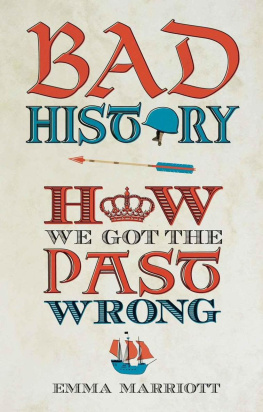https://www.fiverr.com/rroxx/create-awesome-professional-ebook-cover-design?quantity=1&reorder=1
Getting Started
One of the sad facts of history is that not everything you know about the past is altogether true. In fact many of the things you learn about American history in elementary school and high school are an outright lie.
How can that be you ask? I read it in my text book, and teacher said it was true. Why would they lie to me?
Good question and one Im going to attempt to answer throughout this book.
The truth is much of what we learn about history is a series of little white lies that over time have grown into tall tales.
George Washington didnt really walk around with a mouthful of wooden teeth. Those are real teeth and pearl inlays in Washingtons dentures. A recent study by Mary Thompson suggests Washington experimented with early dental transplants. He purchased replacement teeth from his slaves for thirteen shillings (roughly $50 in 2015 money).
Another truth every school child learns early on is Paul Revere was a great hero of the Revolution and saved the day by alerting the minute men at Lexington and Concord that the British were coming.
Its true. Paul Revere made a midnight ride, and he spread the news about the British advance on Lexington and Concord, but the fact isRevere never completed his ride. And, heres another fact hardly anyone knows. Revere wasnt the only one to make that ride. A second rider, William Dawes, set out by land at the same time Revere rowed across the bay to Charlestown.
And, one of the biggest hoaxes ever played on Americans occurred during the 1930s and early 1940s. FDR had polio and could barely walk, yet during his presidency most Americans had no idea the president was crippled.
American history is full of strange paradoxes, and thats one of the things that make it so interesting.
Why doesnt everyone know that Mrs. Woodrow Wilson virtually ran the country during the final days of his administration? Wilson had a massive stroke, and was bedridden for the last year and a half of his presidency.
The six oclock news makes a big deal about cars crashing through White House gates, and crazed lunatics jumping over White House fences, but none of the newscasts have flashed back to the shootout at Blair House on November 1 st , 1950.
Two men approached Blair House from opposite directions and opened fire on White House Police and Secret Service agents stationed there. Over thirty rounds were fired in less than three minutes.
When it was all said and done three White House guards were wounded, and another one died later that day from wounds he received in the gun battle. One of the gunmen, Griselio Torresola was shot in the head and killed. Another, Oscar Collazzo was shot down on the steps of Blair House, but survived.
President Truman watched the entire incident play out from an upstairs bedroom as two gunmen stormed the temporary executive mansion with their guns blazing. An hour after the shooting ended Truman delivered a speech at Arlington National Cemetery apparently unphased by the incident.
Talk about cojones.
Stories of the Discoverers
One fact we are all sure of as kids is Christopher Columbus sailed the ocean blue in fourteen hundred and ninety-two. He expected to discover a new route to the Indies. Instead he sailed head on into a previously unknown continent landing at San Salvador Island in the Bahamas.
Thats what weve been taught for hundreds of years. Hell! We even created a special day just to celebrate his discoveries.
Recent scholarship, however, tells a different story about who the actual discoverer of America was.
If the truth be told, Columbus was late for the party.
The actual discoverers may have been the ancient Phoenicians who are supposed to have sailed to America as early as two thousand years ago. Mark McMenamin contends the images on a Phoenician gold coin dating from 350 BC shows a horse with a tiny map of the world under it. And, you guessed itAmerica is pictured in that map. Another piece of evidence is credited to a Sicilian historian, Diodorus, writing in the first century BC, in the deep off Africa is an island of considerable sizeThe Phoenicians had discovered it by accident after having planted many colonies throughout Africa.
St. Brendan was an Irish monk who legend has it voyaged to America as early as the sixth century. Of course, Brendan wasnt looking for America either. He assumed he could sail his way to paradise, and discover heaven on earth. What he found instead was an island so big after forty days of walking he was still unable to cross it. He discovered a river too wide to be crossed, a floating island, and an island of fire that pelted him with rocks.
The best claim to being the original discoverer of North America belongs to a Viking sailor named Leif Eriksson. Archaeological evidence suggests the Vikings had a settlement at L Anse Aux Meadows in Newfoundland dating back to 1,000 AD.
Before I go further into the story of the discovery, I feel a compelling need to point outAmerica was never lost, so in reality it never needed to be found. North America was populated by millions of Native Americans when the first discoverers arrived. In their quest for riches it never occurred to them the original inhabitants may have had a claim to the lands they inhabited.
But thats a story for another book.
Was an Irish Saint the First European to Set Foot on American Soil?
One of the most fantastical accounts in the annals of discovery is the Navigatio Sancti Brendani , or the Voyages of Saint Brendan . It was first written down in the ninth century, and tells the story of St. Brendans seven year voyage in search of paradise.
Many scholars dismiss the Navigatio because it reads more like science fiction than fact, but others believe there are hints of truth buried deep within the story.
This much we know.
St. Brendan was born near Tralee in County Kerry in Ireland in 484 AD. He was ordained at age 28, and preached the Gospels in Scotland, Wales, and Brittany. During his travels he established monasteries at Ardfert, Shanakeel, Kilbrandon, and Kilbrennan Sound.
At the monastery on Donegal Bay, Brendan met an abbot, Father Barinthus, who said he had made many visits to the Isle of the Saints, and that it was just a short voyage away. After many talks with the abbot Brendan decided to set sail for the Island of Paradise.
To make the journey he constructed a 30 foot currach, a traditional round bottomed Irish boat. The vessel had square sails, and its wooden frame was covered with water-tight seal skins to protect it.
There are over 100 versions of the story, so its difficult to sort fact from fiction. Most accounts say Brendan sailed from Dingle Bay in Ireland with 16 fellow monks, though some place the number of voyagers closer to 160.
Before setting off the monks fasted for forty days in three day intervals. When they started their journey they had no idea where the Island of Paradise was. They trusted in God that he would lead them to it.
Along the way they met with all sorts of adventures that make the stories of Sinbads journeys seem like childs play.
After 40 days there appeared before them an island that was very rocky and steep. The cliffs stood upright like a wall. They sailed around the island for three days until God guided them to a landing place. Once on land they discovered a dog who led them to a large mansion. That night after supper Brendan was visited by a demon in the shape of a black boy. In the morning the monks left the island.

